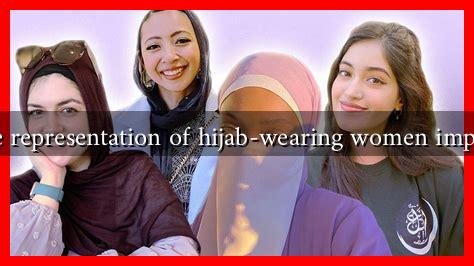-
Table of Contents
Why is Accurate Representation of Hijab-Wearing Women Important in Media?
The representation of hijab-wearing women in media is a topic that has gained significant attention in recent years. As societies become increasingly diverse, the portrayal of different cultures and religions in media becomes crucial. Accurate representation not only fosters understanding but also combats stereotypes and promotes inclusivity. This article explores the importance of accurately representing hijab-wearing women in media, highlighting its impact on society, culture, and individual identity.
The Power of Media Representation
Media plays a pivotal role in shaping public perception and attitudes. The way hijab-wearing women are portrayed can influence societal norms and individual beliefs. Accurate representation is essential for several reasons:
- Challenging Stereotypes: Misrepresentation often leads to the perpetuation of harmful stereotypes. For instance, hijab-wearing women are frequently depicted as oppressed or submissive. Accurate portrayals can challenge these stereotypes by showcasing the diversity and strength of hijab-wearing women.
- Promoting Inclusivity: When media includes diverse representations, it fosters a sense of belonging among marginalized groups. This inclusivity can lead to greater acceptance and understanding within society.
- Empowering Individuals: Positive representation can empower hijab-wearing women by providing role models and affirming their identities. This empowerment can inspire confidence and encourage women to embrace their cultural and religious identities.
Case Studies: Positive Representation in Action
Several media projects have successfully portrayed hijab-wearing women in a positive light, demonstrating the impact of accurate representation:
- Marvel’s Ms. Marvel: The character Kamala Khan, a Pakistani-American superhero, wears a hijab and is portrayed as a relatable and strong character. This representation has resonated with many young Muslim girls, providing them with a hero who reflects their identity.
- Ramy: This Hulu series features a Muslim-American protagonist navigating life, faith, and identity. The show includes hijab-wearing women who are depicted as complex individuals with their own stories, breaking away from one-dimensional portrayals.
- Documentaries and News Features: Programs that focus on the lives of hijab-wearing women, such as “The Hijab: A Woman’s Choice,” provide insight into their experiences, challenges, and triumphs, fostering empathy and understanding among viewers.
The Consequences of Misrepresentation
On the flip side, misrepresentation can have detrimental effects:
- Reinforcing Negative Stereotypes: When hijab-wearing women are portrayed solely as victims or extremists, it reinforces negative stereotypes that can lead to discrimination and prejudice.
- Marginalization: Lack of representation can marginalize hijab-wearing women, making them feel invisible and unvalued in society.
- Impact on Mental Health: Constant exposure to negative portrayals can affect the self-esteem and mental health of hijab-wearing women, leading to feelings of inadequacy and isolation.
Statistics and Research Findings
Research indicates that representation matters. A study by the Geena Davis Institute on Gender in Media found that women of color are often underrepresented in film and television. Furthermore, a report by the Muslim Women’s Network UK highlighted that 67% of Muslim women feel that media portrayals do not reflect their reality. These statistics underscore the need for more accurate and diverse representations of hijab-wearing women in media.
Conclusion: The Path Forward
Accurate representation of hijab-wearing women in media is not just a matter of fairness; it is essential for fostering understanding, challenging stereotypes, and empowering individuals. As media continues to evolve, it is crucial for creators, producers, and consumers to advocate for diverse and authentic portrayals. By doing so, we can contribute to a more inclusive society where everyone’s story is valued and heard.
In summary, the accurate representation of hijab-wearing women in media is vital for:
- Challenging harmful stereotypes
- Promoting inclusivity and understanding
- Empowering individuals and communities
As we move forward, let us strive for a media landscape that reflects the rich diversity of our world, ensuring that every voice is represented and celebrated.
For further reading on the importance of representation in media, you can visit Geena Davis Institute on Gender in Media.


